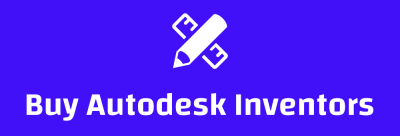Is your software application best suited for a horizontal or vertical market?
Certain software applications have value for businesses in a wide variety of industries. These horizontal market software applications solve common problems, regardless of the type of industry or business. Conversely, vertical market software applications are designed for a specific market and address specific industry needs or support industry-specific workflows.
Which category does your software belong to — and are you sure?
The gray area of the horizontal market and the vertical market
A seemingly simple example of classifying software as “horizontal” or “vertical” is a basic billing application. All businesses need to be able to invoice, so it seems that invoicing software would apply to anyone. It should be a horizontal business application, right? But two companies are downloading the software, one a homemade toy maker and the other a fitness club – and it’s possible both will soon be frustrated with the app.
The toy company sells to both retailers and consumers, so it must price specific products individually or at a wholesale discount and add shipping and taxes where applicable. The fitness club offers annual memberships for the first year and on a monthly basis thereafter. It also sells a variety of products, some taxable and some not, and charges by the hour for sessions with personal trainers.
The software in our example does not meet all the needs of either company, so the user would have to adapt their invoicing process to the software, which is probably not an option, or he finds an application suited to his company. The dominance of software as a service (SaaS) has made so many options available, most for monthly fees rather than upfront capital outlay, so it’s much easier to try out different software than when software was sold primarily through a traditional on-premises model.
If you carefully evaluate your app, you’ll likely find that it works better for certain types of businesses. It can work for a variety of businesses across industries, or maybe it’s best suited for a specific vertical. An honest assessment may also reveal that you have been too narrow in your approach and that your solution may also benefit businesses beyond your target market.
The importance of the demo
Once you’ve confirmed that your app meets the business needs of your target market, whether horizontal, vertical, or niche, you’ll likely come across customers or leads that cater to your competitors as well. If your application is flexible enough to meet the needs of different types of businesses, inevitably your competitors will do their best to convince your customers that their software designed specifically for their industry will benefit them the most. If you market your software as being specifically designed for a particular market, your competitors will tout the benefits of its software, which is proven in a wider market and can be customized for any industry.
The best way to prove that your software is the right choice is with a proper demonstration. For a simple application, a limited demonstration may be enough to show that your claims that the software is suitable for the business are true. However, for an app designed to play a greater role in operational efficiency, it may be necessary to allow the prospect to use the full app on a trial basis.
It goes without saying that everything you say about your software must be true, as evidenced by the demo. It wouldn’t be wise to try to counter competitors by saying your software does something it doesn’t. Your software is suitable for the right customer. Maintain that integrity.
Be everything for the right people
Your software will not work for everyone. Accurately defining your market, whether horizontal or vertical, for your software application is critical to the success of your business. Defining your target market incorrectly means nothing more than wasting time and resources trying to sell your software to companies that quickly discover that it doesn’t support their operations. It’s also a more cost effective way for an ISV to operate. Spring 2017 Meridian Capital Software-as-a-Service M&A Update reports that SaaS companies with a precisely targeted customer base can acquire customers eight times less than those targeting broader markets, experience less churn, and develop relationships that can lead to future upsells.
Your software doesn’t have to appeal to everyone. Define the most relevant market for your application. ![]()


Comments are closed.